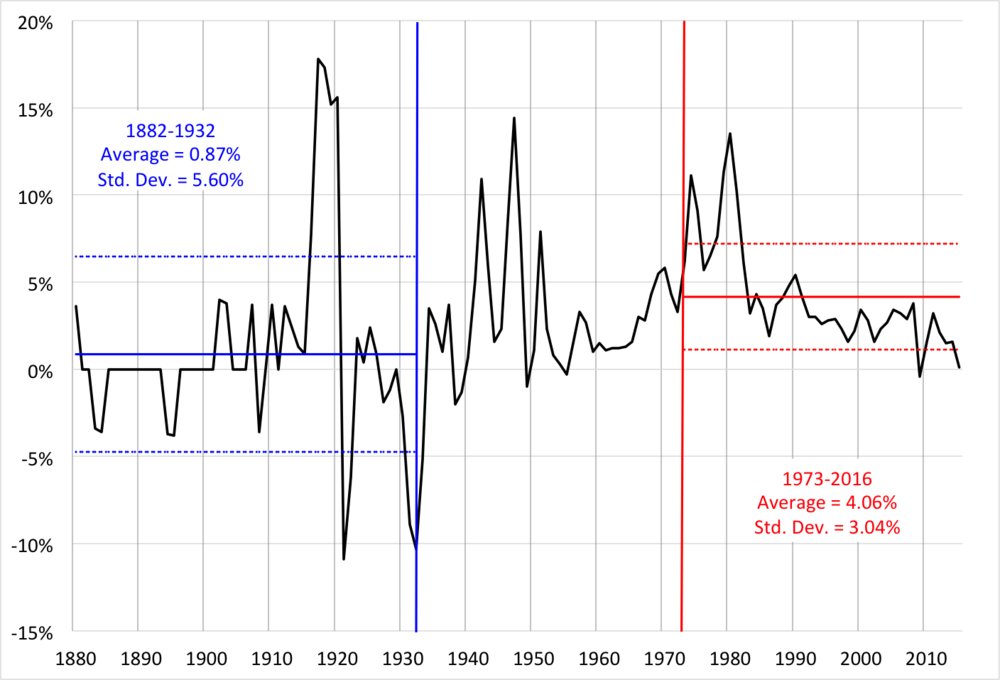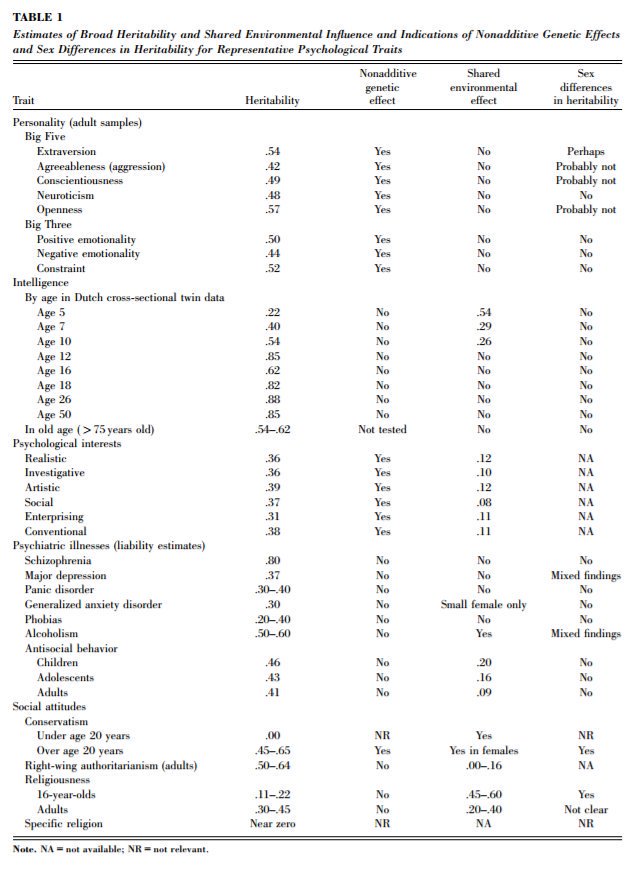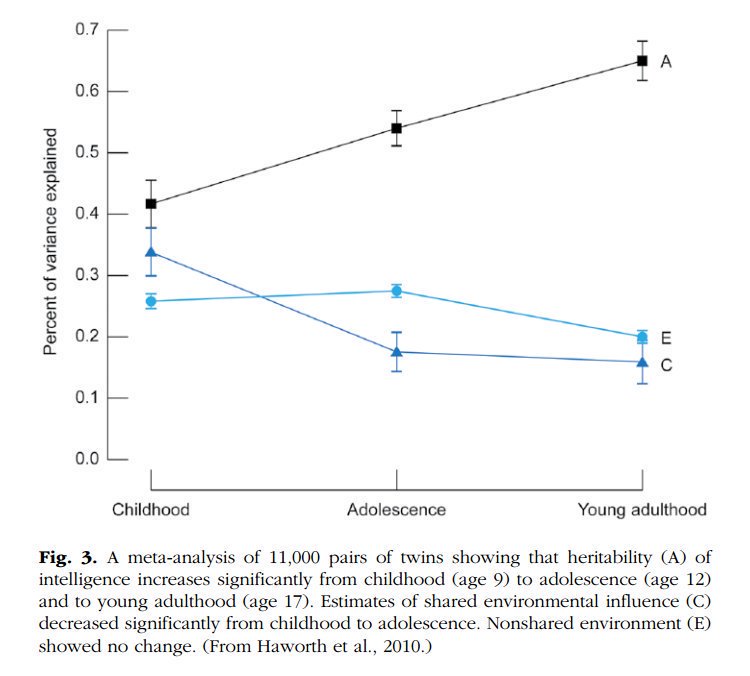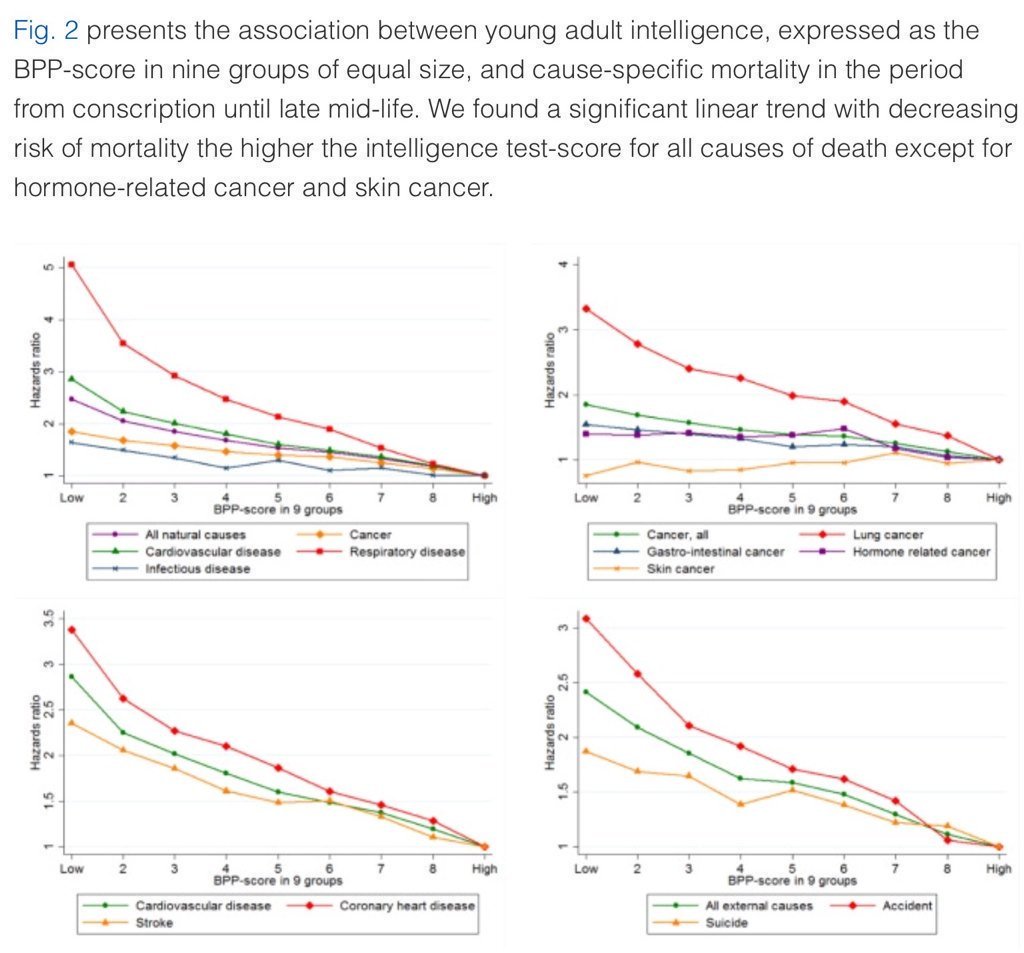2/Let's first tackle the myth that the gold standard provides stability of any sort. The gold standard (as much as in theory we'd like it to) does not control or stabilize inflation.
Prices have been much more stable since 1971 than before 1929:
3/Another part of this stability argument comes from the annual GDP or GNP growth rate. There is no stability under a gold standard whatsoever:
Here's the chart. Once again, we have been better off since 1971 than before 1929:
4/Lastly, the frequency of banking crises has been a lot lower without the gold standard than with it.
The last 50 years saw two major banking crises - the GFC and the S&L crisis in the 1980s. The period of the "purest" gold standard (1880-1929) saw 5 full on panics.
5/Why is the gold standard so bad?
Firstly, gold standard tends to exacerbate economic excesses, while a fiat based system corrects them. Let me explain.
Economic booms lead to increases in inflation.
6/Under a gold standard, there was no central bank to increase and decrease the nominal interest rate, so the real interest rate falls and this continues to increase inflation.
Not true when there are countercyclical forces from central bank monetary policy.
7/There are massive swings in the inflation rate and you can see from this chart - inflation went from almost 25% to double digit deflation in 1920!
Central bank policy leaning against inflation would force interest rates higher as inflation goes higher- like Volcker did.
8/Another important thing to note is the gold standard sustained the Great Depression.
The sooner countries left the gold standard during the depression, the better. Sweden left in 1931 and by 1936, it's economy was LARGER than 1929.
9/Similarly, US suspending conversion to gold in 1933 switched deflation to inflation, asset prices were boosted and it was a very very strong cyclical comeback.
France is the counterfactual - it stopped gold in 1936, it's economy was 26% smaller!
10/A very powerful and extremely useful function of the Federal Reserve is to be a lender of last resort. If the Fed had been restricted in 2008-09, we would likely be in a second depression today.
This helps stop bank panics and continue to maintain stability in the system.
11/Another thing a lot of "sound money" proponents point to is the period between 1880 and 1914 (pre war era) and say that was a brilliant time in human history caused by the gold standard.
That is a post hoc fallacy.
12/I will agree with the general principle that free markets are good and government is bad, and as Friedman has shown - this period had some very free markets.
The last thing we need for our society to get better is a return to connecting the quantity of money to shiny rocks.
13/As
@profplum99 pointed out in his debate with
@PeterSchiff this coincided with Louis Pasteur's work on anti virals, the germ theory of disease came in, just to name 2.
Lots of developments happened that had nothing to do with the gold standard.
14/The monetary framework of a gold standard fits the worldview of a century or two ago, not the world we live in today.
The repo system for example reuses collateral - such a system did not exist in the 1890s. In order to contain collapses in repo, you need a Fed.
15/The MMT'ers (whose description of the way the economy works is spot on) point that bank lending is not constrained by the existence of reserves.
Banks make loans as they please, and borrow reserves when the accounting cycle comes.
16/Lending increases the 'real' money supply, and this pretty much cannot be controlled. The reserve requirement doesn't have much influence on lending.
So there will always be more dollars out there than there is "dollars backed by gold."
17/Lastly, there is a major misunderstanding of the gold folks when it comes to what QE is and what it isn't.
QE is not "printer go brrrr". QE is when the Fed buys assets and gives out bank reserves in place of them.
The only way money can be created is by lending.
18/The Fed is also prohibited, by law, from buying treasuries at auction - the Fed does not directly fund government debt:
19/If you need more evidence that QE (on its own) doesn't cause hyperinflation, look at Japan. Fiscal policy does run the risk of causing higher than expected inflation but there is no chance of a 'Weimar' hyperinflation.
Read some history:
https://t.co/bUP9nkP09c
20/Lastly I wanted to touch up on bitcoin. Bitcoin is simply too volatile to be a good currency. There is no use case for it either so the only reason it is worth something is because people think it has value.
Just like the gold standard this pegs currencies all over the world.
21/Fixed exchange rates do not work, have never worked and will never work. They can last a while but not forever.
Other than this, bitcoin is simply the same as the gold standard - I've explained the defects above.
22/The last thing I wanted to cover in this thread is a favorite argument of goldbugs / laser eyed people - the use of higher housing prices (among other stuff) to blame the Fed.
Higher housing prices are not a result of the elimination of the gold standard.
23/Higher housing prices are caused by supply restrictions due to various zoning laws enacted across cities.
Imagine the government tells developers that they can only build single family homes and not apartments (that have more homes on the same plot of land).
24/The supply of homes is fewer and therefore the prices are higher. The evidence on this is vast. Here is a nice chart from Cato Institute on why this is the case in Australia:
Prices would be considerably lower if there was no 'zoning effect'.
25/I have left out several details for the sake of keeping it within 25-26 tweets including the details of how by maintaining mint par (gold vs dollar), banks could not keep the deposit par (dollar vs deposits) and were forced to close.
People rather hold currency>deposits.
26/If you made it to the end - thank you so much for reading!
If you learnt something / enjoyed this thread I would really appreciate you share / follow / comment!
Once again - thanks for reading!












